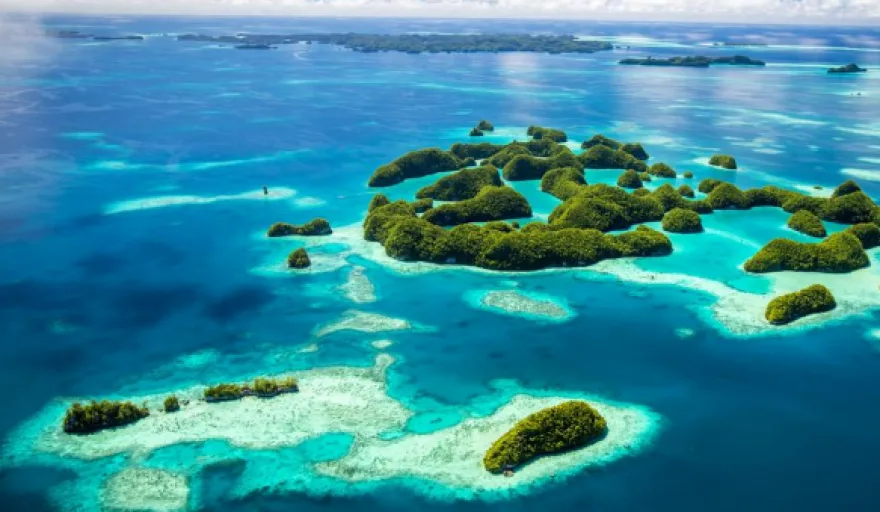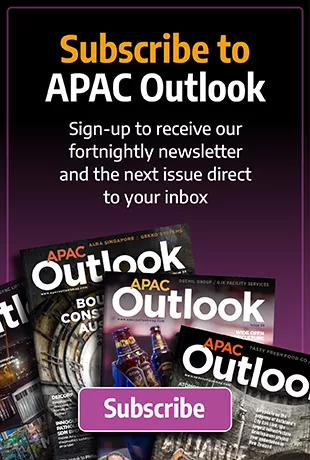Perched above Indonesia and 550 kilometres to the west of the Philippines, Palau is an extraordinary nation.
Made up of 340 coral and volcanic islands on the Kyushu-Palau Ridge, the archipelago offers some of the most breath-taking underwater sights one is likely to see.
From unspoiled coral and pristine beaches to Second World War relics (on land and under the sea) and off-road jungle treks, Palau more than makes up for what is a tiny area of land. Around 18,000 inhabitants live on these islands, the main population centres being found in Babelthuap (Babeldaob), Koror, Malakal, Arakabesan, and Peleliu.
Despite their remoteness, the islands have a long settlement history. It is believed that they were first inhabited around 2,000 to 3,000 years ago by Malays from Indonesia, Melanesians from New Guinea, Philippine natives, and some Polynesians from outlying Polynesian islands in Micronesia.
Since the Second World War, the government has been the major employer here, although many rural areas operate on a subsistence economy. The USA continues to provide financial support to the nation, its official currency still being the US dollar.
Tourism has provided a recent economic boost, a shift which has helped see Palau generate one of the highest per capita incomes in the region.
THE BUSINESS END
Palau’s economy has been a story of growth since the turn of the millennium, the country passing landmark legislation to introduce a minimum wage in 1998.
The law does not apply to foreign workers, who make up a significant proportion of the labour force, in particular those coming from the Philippines and Taiwan.
Major exports include tuna and clothing, while further government income is generated by licensing permits to foreign fishing vessels. In the rural regions, common activities include the gathering and cultivating of taro, sweet potato and cassava.
Tourism has grown considerably over the past few decades and is a vital economic contributor to Palau’s economy.
According to the International Monetary Fund, 2017/2018 saw tourism receipts of $114.2 million, a figure forecast to rise to $137.7 million by 2019/2020. World Bank figures estimate that Palau saw 123,000 tourist arrivals in 2017.
The country has embarked on a five-year Responsible Tourism Policy Framework, an initiative supported by the country’s Tommy Remengesau. Writing in the framework document published in 2017, he said: “Tourism continues to provide for more than half of our economy, with the industry contributing 51 percent of our GDP.
“Growing our tourism industry responsibly is essential to Palau’s economic vitality. A stronger, more diversified industry will provide Palau with improved infrastructure, career opportunities for our youth, and a higher standard of living.”
PALAU VISITORS AUTHORITY
“We are committed to promote our heritage and the unique attractions of Palau through sustainable tourism development and the encouragement of responsible practices.”
This is the mission statement of the Palau Visitors Authority. Charged with promoting tourism in the country, the organisation is headed up by Managing Director Stephanie Nakamura, who set aside some time to answer a few questions about the nation’s offering for travellers.
Q&A WITH STEPHANIE NAKAMURA, PALAU VISITORS AUTHORITY
Can you firstly talk us through the origins of the Palau Visitors Authority, how it came about, and its initial vision?
Stephanie Nakamura (SN): Palau’s first tourist office was established in 1972 under the Economic Development Office of the Trust Territory Government, and it was known as the Palau Tourism Commission. The Tourism Re-Organization Act of 1982 under Palau Public Law 1-49 ended the Tourism Commission and established the Palau Visitors Authority (PVA).
PVA is a semi-autonomous body created by law to promote and encourage the development and marketing of tourism as one of the primary economic sectors of the Republic. PVA is composed of seven members of the board, appointed by the President, with consent of the Senate.
Its primary responsibility is to develop policies and guidelines as a basis for PVA’s operational and marketing direction; it directs policies and work activities of the Authority through the Managing Director, who in turn directs the day to day activities of the organisation.
The Board has another key responsibility in that it recommends to the President and the Congress passages of legislation pertaining to tourism. The PVA acts as a liaison between the tourism industry and the community, particularly the states, in accessing and encouraging the establishment of potential tourist sites and suitable activities for the purpose of spreading tourist traffic throughout Palau.
PVA is responsible for generating awareness about tourism to all segments of the community in Palau to ensure that the Palauan people understand what tourism is about, what it does, and how it effects our island nation.
Since inception, how has the Palau Visitors Authority developed and progressed in terms of its key objectives and the messages it tries to get across?
SN: To this day, Palau Visitors Authority continues to promote our heritage and the unique attractions of Palau through sustainable tourism development and the encouragement of responsible practices.
The first product of the Alii Pass programme offers uniqueness and is one of the few cultural experiences tourists can find on islands. PVA believes this Airai State cultural tour and all other future tours that will be part of the Alii Pass programme deserve to be highlighted.
How would you say Palau has developed in recent years as a business travel hub? Why, in your opinion, should someone visit Palau?
SN: Palau has become home to more and more well-developed hotels and resorts over the years, as well as health and education infrastructures. Palau is known for its pristine seas and nature, which are preserved by our culture. We are also known as the ideal family friendly, world-class destination.
Are there any specific attractions, landmarks or places to eat and drink that you would recommend?
SN: We are renowned for nature, which is preserved or has been created by our culture and recent past – key attractions include birdwatching, caves, dolphin experiences, sharks, shipwrecks, waterfalls, WWII monuments and more.
This year we won a PATA Gold Award (for community-based tourism) for the Airai State Cultural Tour, a rich and eco-friendly guided tour, an experience like no other on the island where culture, history, traditional performances and Palauan delicacies are wedded into a one-day experience.
KOROR CITY IN FOCUS
Koror City, on the island of Koror, served as the provisional capital of Palau until 2006, when it was moved to Melekeok in eastern Babelthuap.
The island was devasted during the Second World War but has emerged as one of the country’s most important economic and tourist centres in the time since. Its natural harbour provides several natural anchorages, the most significant being at Ngemelache, which is now the Koror City’s industrial and shipping suburb.
Around three quarters of Palau’s inhabitants live here, the city being one of the most densely populated in the whole of Micronesia.
Despite this, Koror City is by no means a metropolis, instead retaining the feel of a provincial town. Home to many excellent restaurants, unique shops, small museums and a mixture of monuments, it is the ideal launchpad from which to hop onto the more scenic islands.
It is a short boat ride from the Rock Islands archipelago, and most activities such as diving, kayaking and snorkelling can all be organised via operators who have bases in Koror City.
On a more practical note, most of Palau’s accommodation options are found in here, featuring an array of options from standard motels to resorts which offer sea views.
TRANSPORT LINKS
Several airlines operate flights in and out of Palau, including Asiana Airlines, China Airlines, Korean Air, United Airlines and Lanmei Airlines. The major transit hub is Roman Tmetuchl International Airport, located near Koror City.
Travellers should be aware that Palau operates an international departure tax of $50, which includes a green fee of $2 and is payable by cash or credit card upon check-in at the airport.
Citizens of most countries will also be granted a 30-day tourist visa once they arrive, dependent on the showing of a passport valid for at least six months and a return or onward travel ticket. US citizens are given one-year visas.
Once on the archipelago, the best way to get around is by car and boat as Palau does not have a public transport system. The cost of hiring a car varies from around $40-45 a day, with most rentals coming with an unlimited amount of mileage.
Nakamura comments: “Once you arrive on Palau’s main island of Babeldaob, you have the ability to roam freely for up to 20 miles before encountering the ocean once again. If you want to get around the islands of Koror and Baeldaob, you’ll need some form of transportation. You can either rent a car or book a tour with one of our tour operators.”






















